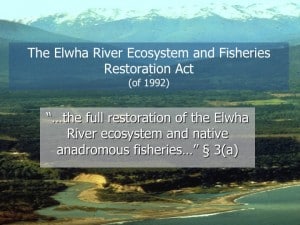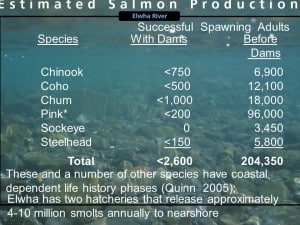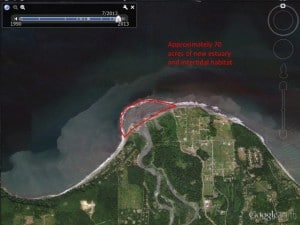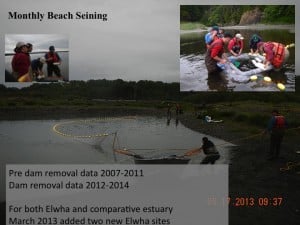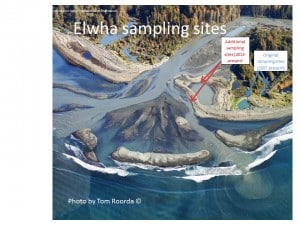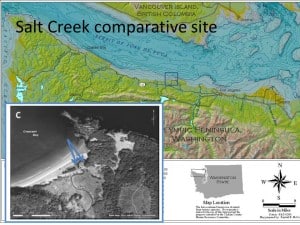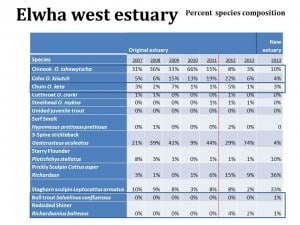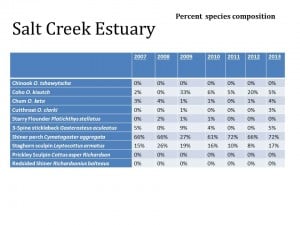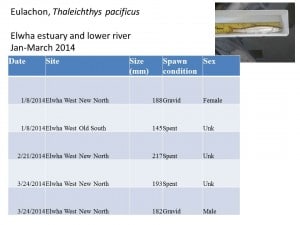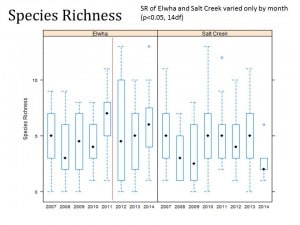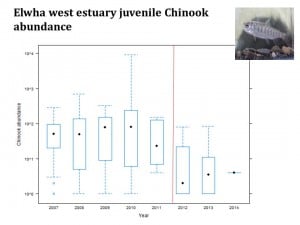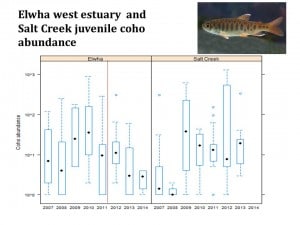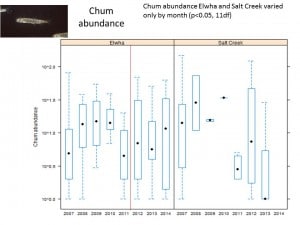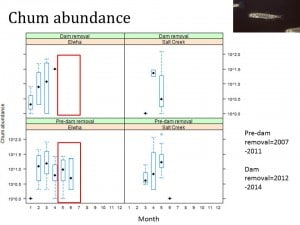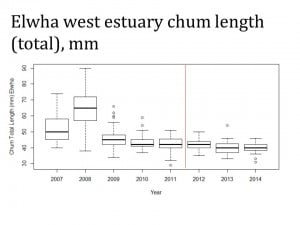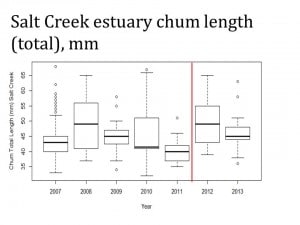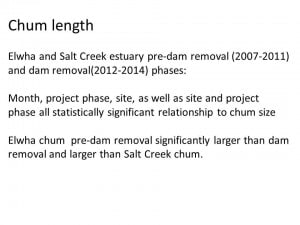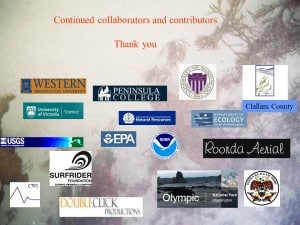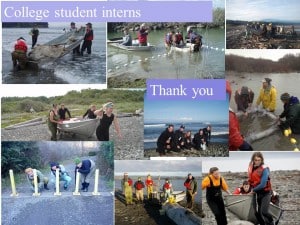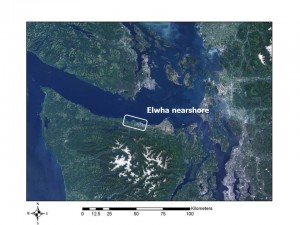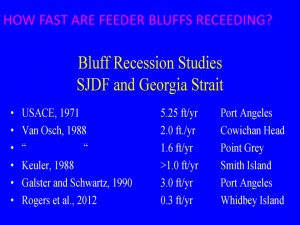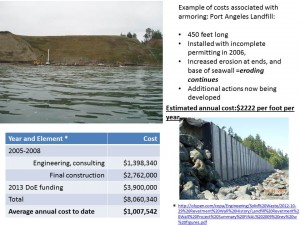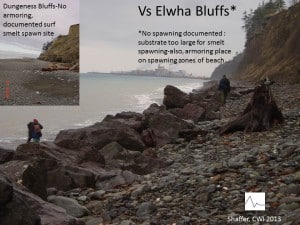
The industrial waterline conveying water from the Elwha river to city of Port Angeles mills was unwisely installed on the Elwha bluffs shoreline in the 1920's. The landfill is burning on the bluff in the background.
Over the next 100 years sediment starvation due to shoreline armoring associated with the industrial waterline and in river dams transitioned the Elwha nearshore from a intact beach and bluff system to a severely sediment starved and hostile ecosystem. Surf smelt spawning extent along the Elwha bluffs compared to intact Dungeness bluffs illustrates the impact of this sediment starvation.


In 2006 the City of Port Angeles installed a sea wall in front of the landfill. The seawall has a band-aid. It slowed garbage from falling into the Strait, but also exacerbated shoreline erosion. The sea wall quickly began to deteriorate, and require costly maintenance, now underway. The sea wall was not permitted federally.

Dam removals offer over 100 years of river sediment, approximately 16 million cubic meters, to the Elwha nearshore. This could reverse sediment starvation in the Elwha nearshore, and reset the Elwha nearshore on a new trajectory.
In 2013, with new city leadership and staff, the City of Port Angeles began efforts to solve the landfill problem. With funding from DoE they are in the first phase of removing landfill from the bluff shoreline.

CWI and the City hosted a meeting with NOAA, WDFW, and DNR management on 12 August 2014 to update agencies on the status of the landfill project and top priority next steps for Elwha nearshore restoration that have been identified by the Elwha Nearshore Consortium over the last decade.


We still have a lot to do-we need to do it now.
Join us.










